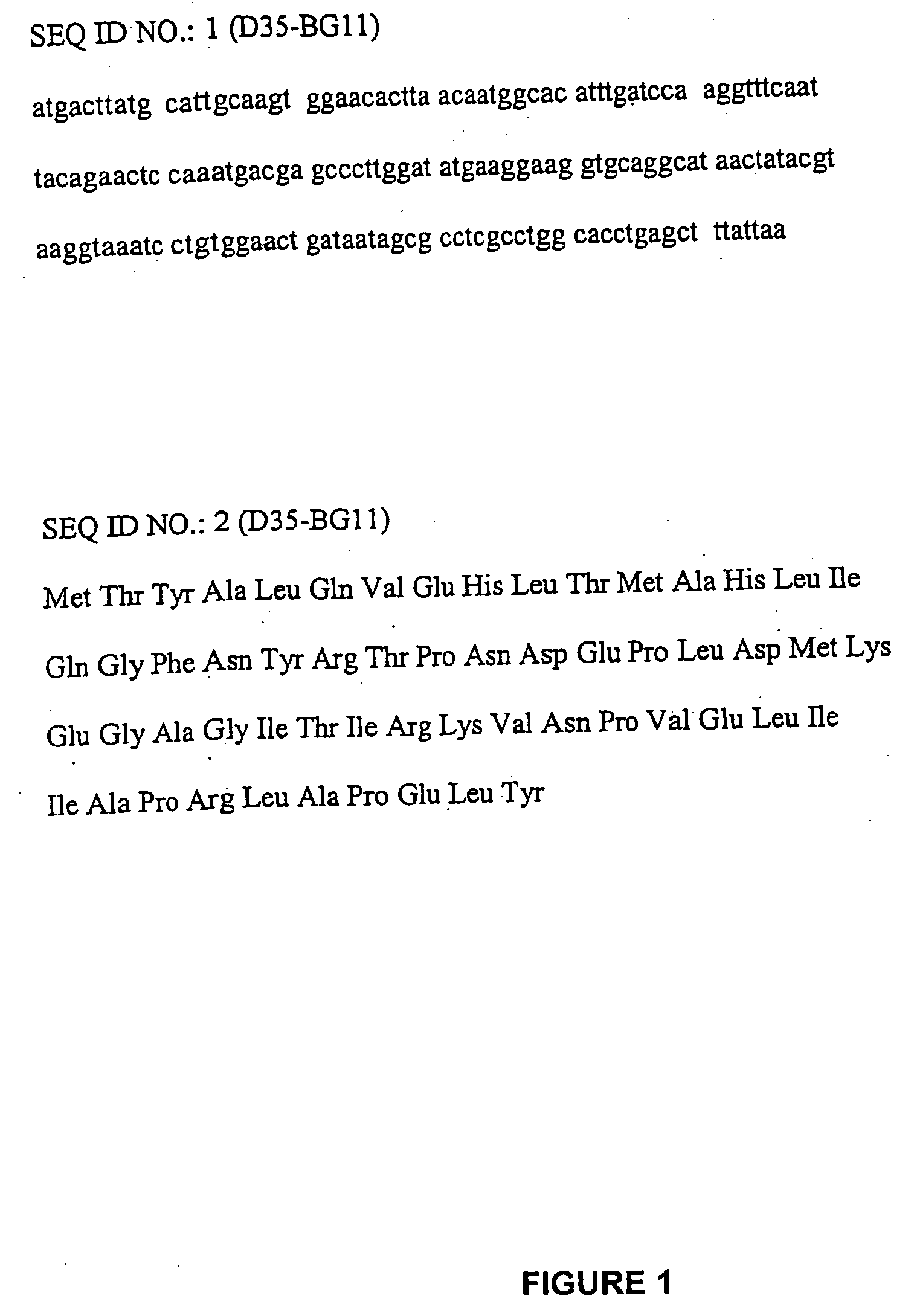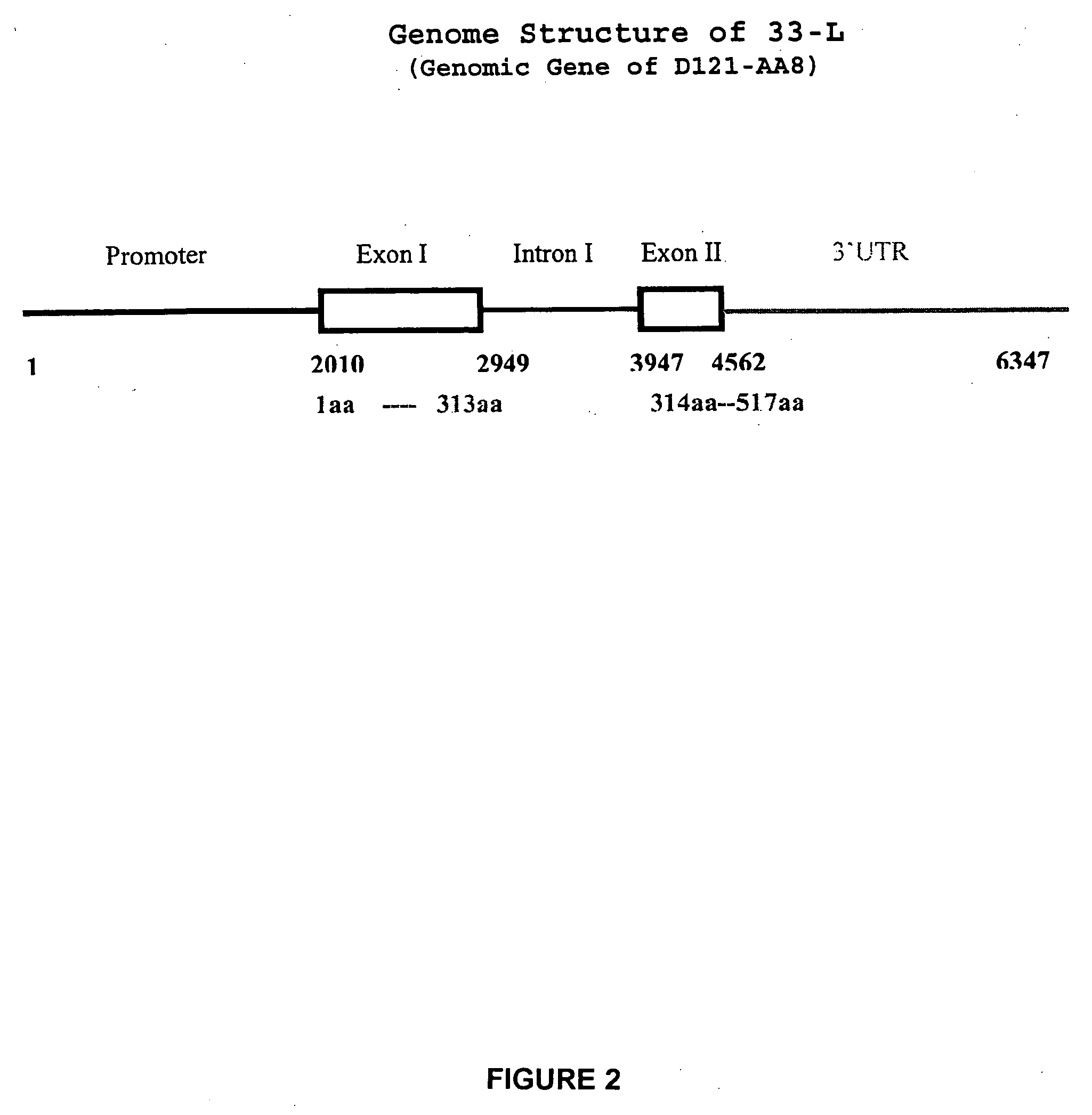Nicotiana nucleic acid molecules and uses thereof
a nucleic acid and nicotiana technology, applied in the field of nicotiana nucleic acid molecules, can solve the problems of hampered cloning of p450 enzymes, and achieve the effects of reducing or increasing the activity of p450 enzymes, altering and reducing the activity of a tobacco nicotine demethylas
- Summary
- Abstract
- Description
- Claims
- Application Information
AI Technical Summary
Benefits of technology
Problems solved by technology
Method used
Image
Examples
example 1
Development of Plant Tissue and Ethylene Treatment
Plant Growth
[0692] Plants were seeded in pots and grown in a greenhouse for 4 weeks. The 4-week old seedlings were transplanted into individual pots and grown in the greenhouse for 2 months. The plants were watered 2 times a day with water containing 150 ppm NPK fertilizer during growth. The expanded green leaves were detached from plants to do the ethylene treatment described below.
Cell Line 78379
[0693] Tobacco line 78379, which is a Burley tobacco line released by the University of Kentucky was used as a source of plant material. One hundred plants were cultured as standard in the art of growing tobacco, transplanted, and tagged with a distinctive number (1-100). Fertilization and field management were conducted as recommended.
[0694] Three quarters of the 100 plants converted between 20 and 100% of the nicotine to nornicotine. One quarter of the 100 plants converted less than 5% of the nicotine to nornicotine. Plant number 8...
example 2
RNA Isolation
[0700] For RNA extractions, middle leaves from two-month old greenhouse grown plants were treated with ethylene as described above. The 0 and 24-48 hours samples were used for RNA extraction. In some cases, leaf samples under the senescence process were taken from the plants 10 days post flower-head removal. These samples were also used for extraction. Total RNA was isolated using Rneasy Plant Mini Kit® (Qiagen, Inc., Valencia, Calif.) according to the manufacturer's protocol.
[0701] The tissue sample was ground under liquid nitrogen to a fine powder using a DEPC treated mortar and pestle. Approximately 100 milligrams of ground tissue were transferred to a sterile 1.5 ml Eppendorf tube. This sample tube was placed in liquid nitrogen until all samples were collected. Then, 450 μl of Buffer RLT as provided in the kit (with the addition of Mercaptoethanol) was added to each individual tube. The sample was vortexed vigorously and incubated at 56° C. for 3 minutes. The lysa...
example 3
Reverse-Transcription-PCR
[0703] First strand cDNA was produced using SuperScript reverse transcriptase following the manufacturer's protocol (Invitrogen, Carlsbad, Calif.). The poly A+ enriched RNA / oligo dT primer mix consisted of less than 5 μg of total RNA, 1 μl of 10 mM dNTP mix, 1 μl of Oligo d(T)12-18 (0.5 μg / μl), and up to 10 μl of DEPC-treated water. Each sample was incubated at 65° C. for 5 minutes, then placed on ice for at least 1 minute. A reaction mixture was prepared by adding each of the following components in order: 2 μl 10× RT buffer, 4 μl of 25 mM MgCl2, 2 μl of 0.1 M DTT, and 1 μl of RNase OUT Recombinant RNase Inhibitor. An addition of 9 μl of reaction mixture was pipetted to each RNA / primer mixture and gently mixed. It was incubated at 42° C. for 2 minutes and 1 μl of Super Script II RT was added to each tube. The tube was incubated for 50 minutes at 42° C. The reaction was terminated at 70° C. for 15 minutes and chilled on ice. The sample was collected by cent...
PUM
| Property | Measurement | Unit |
|---|---|---|
| Fraction | aaaaa | aaaaa |
| Current | aaaaa | aaaaa |
| Volume | aaaaa | aaaaa |
Abstract
Description
Claims
Application Information
 Login to View More
Login to View More - R&D
- Intellectual Property
- Life Sciences
- Materials
- Tech Scout
- Unparalleled Data Quality
- Higher Quality Content
- 60% Fewer Hallucinations
Browse by: Latest US Patents, China's latest patents, Technical Efficacy Thesaurus, Application Domain, Technology Topic, Popular Technical Reports.
© 2025 PatSnap. All rights reserved.Legal|Privacy policy|Modern Slavery Act Transparency Statement|Sitemap|About US| Contact US: help@patsnap.com



